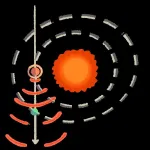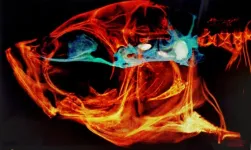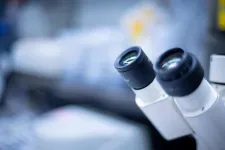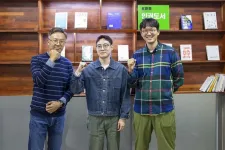(Press-News.org) October 16, 2024, Mountain View, CA - Scientists at the SETI Institute and partners from Penn State University used the Allen Telescope Array (ATA) to search for signs of alien technology in the TRAPPIST-1 star system. The team spent 28 hours scanning the system, looking for radio signals that could indicate extraterrestrial technology. This project marks the longest single-target search for radio signals from TRAPPIST-1. Although they didn’t find any evidence of extraterrestrial technology, their work provided valuable data and introduced a new way to search for signals in the future.
“This research shows we are getting closer to detecting radio signals similar to the ones we send into space,” said Nick Tusay, a graduate student research fellow at Penn State University. “Most searches assume some intent, like beacons, because our receivers have a sensitivity limit to a minimum transmitter power beyond anything we unintentionally send out. But, with better equipment, like the upcoming Square Kilometer Array (SKA), we might soon be able to detect signals from an alien civilization communicating with its spacecraft.”
The project focused on a phenomenon called planet-planet occultations (PPOs). PPOs happen when one planet moves in front of another. If intelligent life exists in that star system, radio signals sent between planets could leak and be detected from Earth.
Using the upgraded ATA, the team scanned a wide range of frequencies, looking for narrowband signals, which are considered possible signs of alien technology. The team filtered millions of potential signals, narrowing down to about 11,000 candidates for detailed analysis. The team detected 2,264 of these signals during predicted PPO windows. However, none of the signals were of non-human origin.
The ATA's new capabilities, which include advanced software to filter signals, helped the team separate possible alien signals from Earth-based ones. They believe that refining these methods and focusing on events like PPOs could help increase the chances of detecting alien signals in the future.
“This project included work by undergraduate students in the 2023 SETI Institute Research Experience for Undergraduates (REU) program,” said Dr. Sofia Sheikh, a SETI researcher at the SETI Institute. “The students looked for signals from human-made orbiters around Mars to check if the system could detect signals correctly. It was an exciting way to involve students in cutting-edge SETI research.”
The TRAPPIST-1 system is a small, cool star about 41 light years from Earth. It has seven rocky planets, some of which are in the habitable zone, where conditions might allow liquid water to exist—an essential ingredient for life as we know it. This makes TRAPPIST-1 a prime target searching for life beyond Earth.
The team did not find any alien signals this time, but they will continue improving their search techniques and exploring other star systems. Future searches with bigger and more powerful telescopes could help scientists detect even fainter signals and expand our understanding of the universe.
A paper describing the research is accepted for publication in the Astronomical Journal and is available online as a preprint.
About the SETI Institute
Founded in 1984, the SETI Institute is a non-profit, multi-disciplinary research and education organization whose mission is to lead humanity’s quest to understand the origins and prevalence of life and intelligence in the universe and to share that knowledge with the world. Our research encompasses the physical and biological sciences and leverages expertise in data analytics, machine learning and advanced signal detection technologies. The SETI Institute is a distinguished research partner for industry, academia and government agencies, including NASA and NSF.
Contact information
Rebecca McDonald
Director of Communications
SETI Institute
rmcdonald@seti.org
END
Scientists use Allen Telescope Array to search for radio signals in the TRAPPIST-1 star system
This project marks the longest single-target search for radio signals from TRAPPIST-1.
2024-10-16
ELSE PRESS RELEASES FROM THIS DATE:
Zebrafish as a model for studying rare genetic disease
2024-10-16
Fukuoka, Japan—Nager syndrome, or NS, is a rare genetic disease that affects the development of the face and limbs, usually causing anomalies in the bone structures of the jaws, cheeks, and hands. With a prevalence of less than 100 cases ever reported, not much is known about the disease except the fact that mutations in the SF3B4 gene are its primary cause. Now, in a recent study made available online on September 15, 2024 and upcoming in the November issue of International Journal of Biological Macromolecules, researchers from Kyushu University have developed a convenient approach to explore the underlying mechanisms ...
A synthetic molecular switch lets you 'paint' with natural light
2024-10-16
Liquid crystals exist in a phase of their own. They can flow like liquids, but because their molecules are arranged in a somewhat orderly way, they can be easily manipulated to reflect light. This flexibility has made liquid crystals the go-to material for energy-efficient phone, TV, and computer display screens.
In a new study in Nature Chemistry, researchers at Dartmouth and Southern Methodist University hint at other applications for liquid crystals that might one day be possible, all powered by natural light. They include liquid crystal ...
Honoring a career of outstanding achievement
2024-10-16
NEWPORT NEWS, VA – This year, the U.S. Department of Energy's Thomas Jefferson National Accelerator Facility celebrates the 40th anniversary of its founding to probe the secrets of the subatomic universe. And for 39 of those years, esteemed physicist Volker D. Burkert has been an important part of its mission.
Now, Burkert is being honored for his contributions to advancements in experimental physics with the prestigious Tom W. Bonner Prize in Nuclear Physics. The citation reads: “For exemplary leadership in the development of high-performance instrumentation for large acceptance spectrometers that have enabled breakthroughs in fundamental nuclear ...
MSK research highlights, October 15, 2024
2024-10-16
A new tactic for overcoming breast cancer drug resistance
The most common type of breast cancer, estrogen receptor positive, has been effectively treated with hormone therapy combined with drugs that block cell division called CDK4/6 inhibitors. However, it has been impossible to predict how long people will respond to this drug combination. In some patients, the disease is controlled for years, but in others, the cancer starts progressing again after just a few months. This presents ...
Hot news flash: Menopause can impact a woman’s heart health
2024-10-16
DALLAS, Oct. 16, 2024 — The risk of heart disease increases with age for most people, however, for women that may be even more true. The menopause transition, those years leading up to and through menopause, is a time of increasing heart disease risk, according to an American Heart Association scientific statement published in the flagship journal Circulation in 2020.
“While many people think that breast cancer is the leading killer of women in the U.S., in ...
Standing more may not reduce cardiovascular disease risk, could increase circulatory disease
2024-10-16
EMBARGO: SYDNEY: 17 October 2024, 00.01 | NEW YORK: 16 October 2024, 09:00
Standing more may not reduce cardiovascular disease risk, could increase circulatory disease
Standing has gained popularity among people looking to offset the harms of a sedentary lifestyle often caused by spending long days sitting in front of the computer, television or driving wheel. Standing desks have become a popular option among office workers, and in other industries like retail, workers may opt to stand instead of sit.
However, their efforts may not produce the intended result. New University of Sydney research has shown that over ...
Video series aims at improving indoor air quality
2024-10-16
Improving indoor air quality is the goal of a new video series developed by experts at the University of California, Davis in collaboration with the California Department of Public Health. Aimed at building and facility managers, the videos distill the science of air quality into steps building and facility managers can take to remove pollutants, including viruses, from the place we spend most of our time -- indoors.
“The goal is to help people understand the issues around indoor air quality, how it is related to disease, and what managers can do to make it better,” said Professor Chris Cappa, chair of the Department of Civil and Environmental ...
Men and women process pain differently, study finds
2024-10-16
In a new study evaluating meditation for chronic lower back pain, researchers at University of California San Diego School of Medicine have discovered that men and women utilize different biological systems to relieve pain. While men relieve pain by releasing endogenous opioids, the body’s natural painkillers, women rely instead on other, non-opioid based pathways.
Synthetic opioid drugs, such as morphine and fentanyl, are the most powerful class of painkilling drugs available. Women are known to respond poorly to opioid therapies, which use synthetic opioid molecules to bind to the same receptors as naturally-occurring endogenous ...
Korean research team proposes optimal utilization strategy for hydrogen energy, the key to carbon neutrality
2024-10-16
A joint research team, led by Dr. Sang Yong Park from the National Climate Technology Center at the Korea Institute of Energy Research (KIER) and Professor Dong Gu Choi from the Department of Industrial and Management Engineering at POSTECH, has developed an energy system model optimized for Korea's environment and proposed an optimal strategy for utilizing hydrogen energy.
Hydrogen is being highlighted as a key resource for achieving the government's "2050 Carbon Neutrality Scenario." It is not only a clean energy source in itself but can also be produced using surplus power from renewable ...
NFL Player Ambassadors urge fans to learn lifesaving CPR in 90 seconds
2024-10-16
DALLAS, October 16, 2024 — More than half of all people who experiencing sudden cardiac arrest outside of hospital don’t receive immediate cardiopulmonary resuscitation (CPR). As a result, 9 out of 10 times they die[1]. Yet it takes just 90 seconds to learn the fundamentals of Hands-Only CPR to save a life. CPR, especially if performed immediately, can double or triple a person’s chance of survival. To save more lives, the American Heart Association and the National Football League (NFL) are actively putting boots on the ground - cleats on the field - to educate ...
LAST 30 PRESS RELEASES:
New study highlights link between eviction rates and gun violence
Heatwaves heat up soil but not toxin levels in rice, study finds
Digital modeling reveals where construction carbon emissions really come from
Turning farm waste into water filters
New study shows how the spleen helps the immune system accept a transplant
New Mayo Clinic study advances personalized prostate cancer education with an EHR-integrated AI agent
Researchers identify novel therapeutic target to improve recovery after nerve injury
Microbes in breast milk help populate infant gut microbiomes
Reprogramming immunity to rewrite the story of Type 1 diabetes
New tool narrows the search for ideal material structures
Artificial saliva containing sugarcane protein helps protect the teeth of patients with head and neck cancer
Understanding the role of linear ubiquitination in T-tubule biogenesis
Researchers identify urban atmosphere as primary reservoir of microplastics
World’s oldest arrow poison – 60,000-year-old traces reveal early advanced hunting techniques
Bristol scientists discover early sponges were soft
New study uncovers how rice viruses manipulate plant defenses to protect insect vectors
NSF–DOE Vera C. Rubin Observatory spots record-breaking asteroid in pre-survey observations
Ribosomal engineering creates “super-probiotic” bacteria
This self-powered eye tracker harnesses energy from blinking and is as comfortable as everyday glasses
Adverse prenatal exposures linked to higher rates of mental health issues, brain changes in adolescents
Restoring mitochondria shows promise for treating chronic nerve pain
Nature study identifies a molecular switch that controls transitions between single-celled and multicellular forms
USU chemists' CRISPR discovery could lead to single diagnostic test for COVID, flu, RSV
Early hominins from Morocco reveal an African lineage near the root of Homo sapiens
Small chimps, big risks: What chimps show us about our own behavior
We finally know how the most common types of planets are created
Thirty-year risk of cardiovascular disease among healthy women according to clinical thresholds of lipoprotein(a)
Yoga for opioid withdrawal and autonomic regulation
Gene therapy ‘switch’ may offer non-addictive pain relief
Study shows your genes determine how fast your DNA mutates with age
[Press-News.org] Scientists use Allen Telescope Array to search for radio signals in the TRAPPIST-1 star systemThis project marks the longest single-target search for radio signals from TRAPPIST-1.





